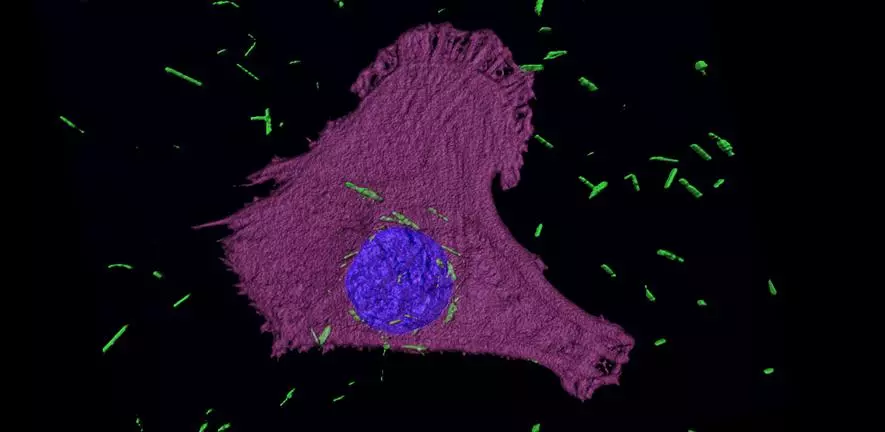Tiny nanoscale materials offer unique properties, and one way scientists are looking to leverage these is by taking aim at cancer cells of different kinds. A research team in the UK have demonstrated how an adaptation of this technology can be used to tackle mesothelioma, a hard-to-treat cancer caused by asbestos exposure, with a little help from laser light.
The work was carried out by scientists from the University of Cambridge and the University of Leeds and uses nanoparticles made from gold, which has proven a popular choice of material in cancer research of this type. Whether they’re in the shape of stars, spheres or tubes, gold nanoparticles have shown great promise when it comes to more targeted treatments for cancer, often through their ability to infiltrate the cells and be heated up to destroy them.
The gold nanoparticles featured in this new study are tiny cylinders that measure just one thousandth of the width of a human hair. Likened to a bullet, these are formed by depositing gold onto silver nanorods at room temperature, which then builds up on the surface and causes the silver to dissolve, eventually leaving behind just a hollowed out golden tube.
By tweaking this process, the researchers can tune the physical properties of the tubes such as the wall thickness and composition, which in turn changes the way they respond to different wavelengths of light. The team found success using a particular design to tackle mesothelioma cells, which is a cancer with poor survival rates that is caused by exposure to asbestos.
“Mesothelioma is one of the ‘hard-to-treat’ cancers, and the best we can offer people with existing treatments is a few months of extra survival,” says Dr Arsalan Azad from the University of Cambridge. “There’s an important unmet need for new, effective treatments.”
The team’s gold nanotubes were added to mesothelioma cells cultured in the lab. The cells absorbed the nanotubes in a way that brought them close to their nucleus and therefore the cell's DNA. The team then applied a laser which saw the nanotubes absorb the light and start to heat up, eventually killing off the cancer cell.
“The mesothelioma cells ‘eat’ the nanotubes, leaving them susceptible when we shine light on them,” says the University of Cambridge’s Professor Stefan Marciniak. “Laser light is able to penetrate deep into tissue without causing damage to surrounding tissue. It then gets absorbed by the nanotubes, which heat up and, we hope in the future, could be used to cause localized cancer-cell killing.”
The scientists are now working to improve the nanotubes further so that they target the cancer cells even more precisely and bring less harm to surrounding healthy cells. Packing them with medicines to supercharge their cancer-killing abilities is another possibility.
“Having control over the size and shape of the nanotubes allows us to tune them to absorb light where the tissue is transparent and will allow them to be used for both the imaging and treatment of cancers,” Professor Stephen Evans from the University of Leeds. “The next stage will be to load these nanotubes with medicines for enhanced therapies.”
The research was published in the journal Small.
Source: University of Cambridge




